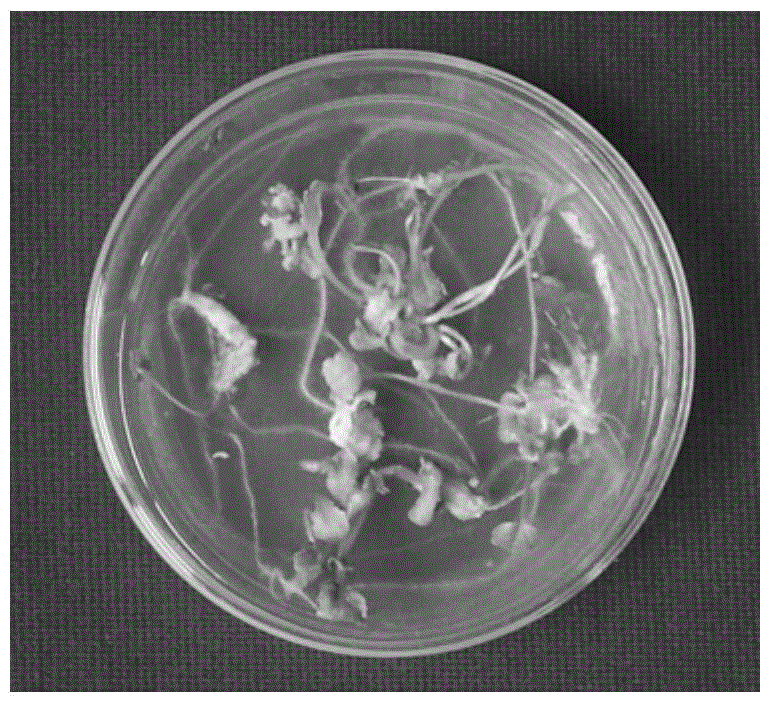Method for efficiently obtaining regeneration plant by cultivating isolated microspores of brassica oleracea L.var.capitata L.
A technology for cabbage and plant regeneration, applied in the biological field, can solve problems such as embryogenesis rate and low plant regeneration frequency, and achieve the effects of quality improvement, regeneration rate improvement and mortality reduction.
- Summary
- Abstract
- Description
- Claims
- Application Information
AI Technical Summary
Problems solved by technology
Method used
Image
Examples
Embodiment 1
[0038] (1) Embryogenesis
[0039] 1) Donor material selection Select buds of different lengths from healthy donor plants, and use tweezers to extrude some microspores. Acetate magenta or 4,6-diamididine-2-phenylindole dihydrochloride (DAPI) fluorescence After dyeing, the microspore development period was observed under a microscope, and the flower bud with the microspore in the later mononuclear stage was selected as the donor flower bud. There were differences in the length of flower buds corresponding to the optimal culture period of different genotypes, but basically the proportion of microspores in the later mononuclear stage was the highest among the flower buds in the range of 3.5-4.5 mm.
[0040] 2) Sterilization of the donor material: Wash the flower buds with purified water, then disinfect the buds with 75% alcohol by volume for 30s in an ultra-clean workbench, then disinfect the surface with a 7% volumetric sodium hypochlorite solution for 15 minutes, and then rinse ...
PUM
 Login to View More
Login to View More Abstract
Description
Claims
Application Information
 Login to View More
Login to View More - R&D
- Intellectual Property
- Life Sciences
- Materials
- Tech Scout
- Unparalleled Data Quality
- Higher Quality Content
- 60% Fewer Hallucinations
Browse by: Latest US Patents, China's latest patents, Technical Efficacy Thesaurus, Application Domain, Technology Topic, Popular Technical Reports.
© 2025 PatSnap. All rights reserved.Legal|Privacy policy|Modern Slavery Act Transparency Statement|Sitemap|About US| Contact US: help@patsnap.com



